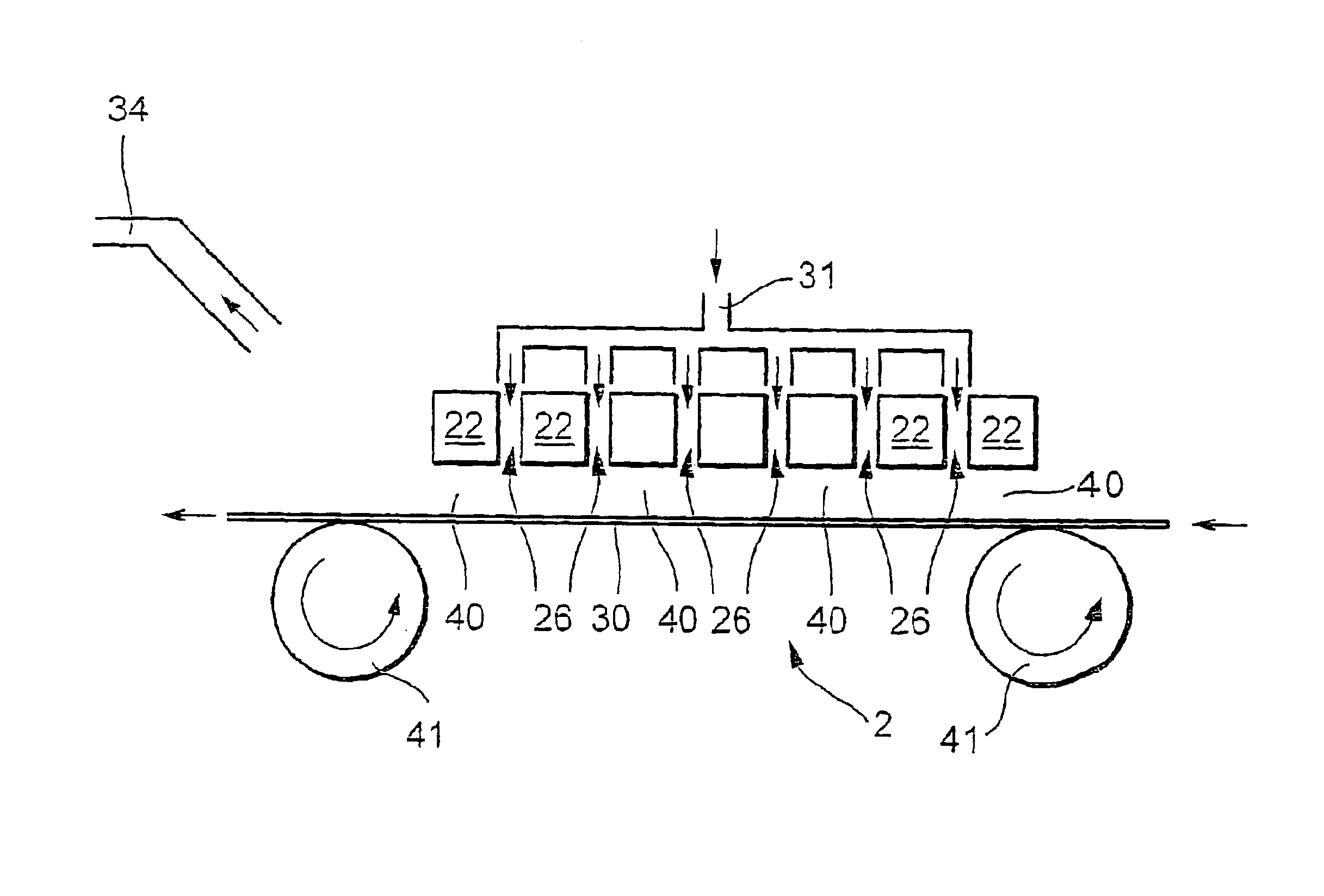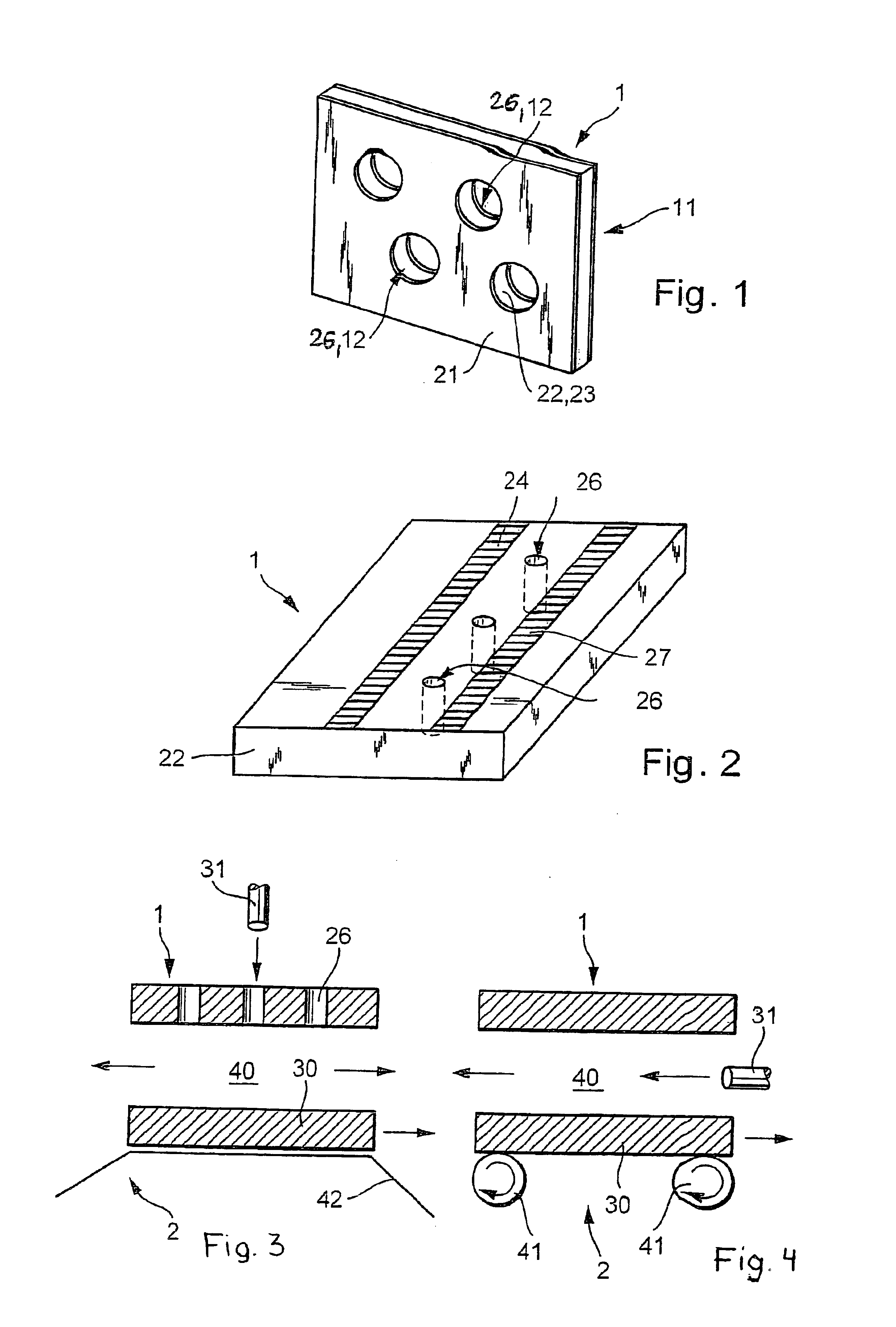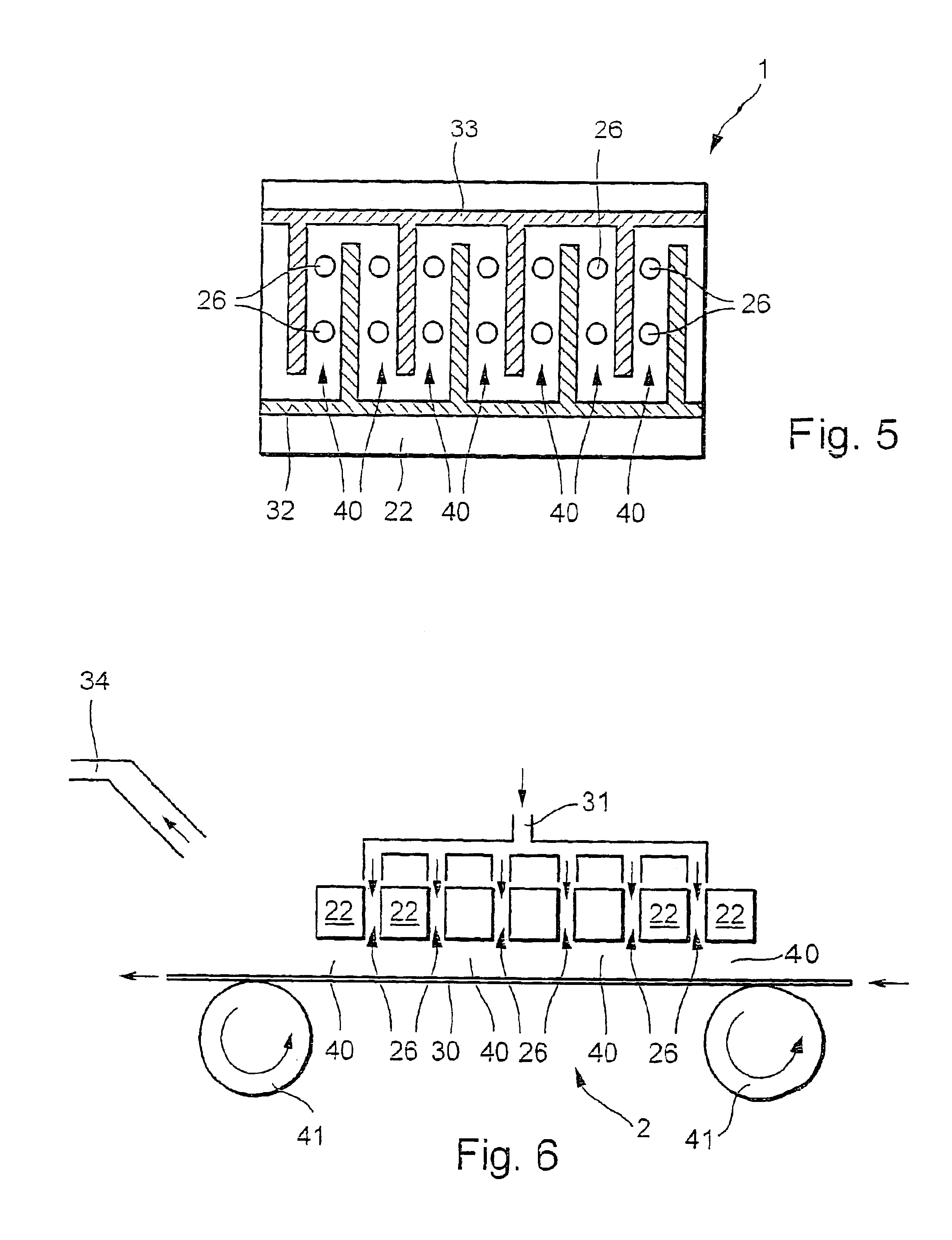Device and method for charge removal from dielectric surfaces
a dielectric surface and charge technology, applied in the direction of electrostatic charges, emergency protective circuit arrangements, coatings, etc., can solve the problems of high handling difficulty, health risk to people, and disturbance in the system used, so as to improve the efficiency of electric charge removal and optimize the homogeneity of plasma
- Summary
- Abstract
- Description
- Claims
- Application Information
AI Technical Summary
Benefits of technology
Problems solved by technology
Method used
Image
Examples
Embodiment Construction
[0022]FIG. 1 shows a plasma device 1 having a dielectric plate 22 made of a low-loss puncture proof dielectric such as silicon dioxide or an aluminum oxide, for example. Dielectric plate 22 is also provided with a planar first electrode 11 on one of its surfaces and a planar second electrode 21 on the diametrically opposite surface. Electrodes 11, 21 are made of a metal such as copper, high-grade steel, gold, or silver, for example, and are applied in the form of a coating 10 μm to 200 μm thick on the surface of dielectric plate 22, which is typically approx. 0.05 mm to 2 mm thick.
[0023]FIG. 1 also shows that electrodes 11, 21 and dielectric plate 22 are provided with a plurality of common through-bores 26. These through-bores 26 are preferably laid out in a regular pattern and have a typical diameter of approx. 40 μm to 1 mm. Thus on the whole dielectric plate 22 is provided with microstructured planar electrodes 11, 21.
[0024]To generate a plasma, electrodes 11, 21 in FIG. 1 are co...
PUM
| Property | Measurement | Unit |
|---|---|---|
| diameter | aaaaa | aaaaa |
| electric voltage | aaaaa | aaaaa |
| electric voltage | aaaaa | aaaaa |
Abstract
Description
Claims
Application Information
 Login to View More
Login to View More - R&D
- Intellectual Property
- Life Sciences
- Materials
- Tech Scout
- Unparalleled Data Quality
- Higher Quality Content
- 60% Fewer Hallucinations
Browse by: Latest US Patents, China's latest patents, Technical Efficacy Thesaurus, Application Domain, Technology Topic, Popular Technical Reports.
© 2025 PatSnap. All rights reserved.Legal|Privacy policy|Modern Slavery Act Transparency Statement|Sitemap|About US| Contact US: help@patsnap.com



